Input Lag and Response Times
We've heard frequent complaints about input lag on various LCDs, particularly after our last review of the Samsung 245T. We decided it was time to take a closer look at the subject and see if we could come up with a repeatable test. We ended up settling on a test similar to what we were using to show response times, with a few changes.
We run the Wings of Fury benchmark in 3DMark03, with the resolution set to the native LCDs resolution -- in this case 1920x1200. Our test system is an overclocked quad-core Q6600 (3.30 GHz) running two Radeon HD 3870 cards in CrossFire on a Gigabyte GA-X38-DQ6 motherboard. (This is the same system used in our initial testing of 3DMark vantage.) We connect the test LCD and a reference LCD to two outputs from the Radeon 3870 and set the monitors to run in clone mode.
The reference Monitor is an HP LP3065, which we have found to be one of the best LCDs we currently possess in terms of not having input lag. (The lack of a built-in scaler probably has something to do with this.) [Ed: Before you ask, no, I do not have any CRTs around that I can use as a reference monitor, and frankly I don't want any. They're huge, heavy, and require more power, and the best ones were made over five years ago. Sorry - LCDs are where everything is heading. R.I.P. CRT.]
While the benchmark is looping, we snap a bunch of pictures of the two LCDs sitting side-by-side. We set our camera to f/2.2, ISO-400, and a 1/400 sec exposure in order to get a clear snapshot of the on screen action. (Note that these settings have changed from previous articles.) 3DMark03 lists a runtime with a resolution of 10 ms at the bottom of the display, and we can use this to estimate whether a particular LCD has more or less input lag in our reference LCD. We then sort through the images and discard any where the times shown on the LCDs are not clearly legible, until we are left with 10 images for each test LCD. We record the difference in time relative to the HP LP3065 and average the 10 results to come up with an estimated input lag value.
It's important to note that this is merely an estimate -- whatever the reference Monitor happens to be, there are some inherent limitations. For one, LCDs only refresh their display 60 times per second, so any measurement less than approximately 17 ms is not 100% accurate. Second, the two LCDs can have mismatched vertical synchronization, so it's entirely possible to end up with a one frame difference on the time readout purely because of this. That's why we average the results of 10 images, and we are confident that our test procedure can at least show when there is a consistent input lag/internal processing delay.
Here is a summary of our results, followed by a sample image chosen to highlight the pixel response time of the LCDs. Despite what the manufacturers might advertise as their average response time, we found most of the LCDs were equal in this area -- they all show roughly a one frame "lag", which equates to a response time of around 16 ms.
| Display Input/Processing Lag vs. HP LP3065 | |||||||||||
| One | Two | Three | Four | Five | Six | Seven | Eight | Nine | Ten | Average (ms) | |
| ASUS MK241H | 10 | 0 | 0 | 0 | 0 | 0 | 0 | 0 | 0 | 0 | 1 |
| Dell 2407WFP | 10 | 20 | 30 | 20 | 10 | 10 | 30 | 30 | 10 | 20 | 19 |
| Dell 2408WFP | 30 | 40 | 40 | 40 | 30 | 30 | 40 | 30 | 50 | 50 | 38 |
| Gateway FHD2400 | -10 | -10 | 0 | 10 | 10 | 10 | 0 | 10 | 10 | 0 | 3 |
| Gateway FPD2485W | 30 | 10 | 20 | 20 | 20 | 10 | 0 | 30 | 20 | 20 | 18 |
| HP w2408 | 10 | 10 | 0 | 0 | 0 | 0 | 0 | 10 | 0 | 0 | 3 |
| LaCie 324 | 40 | 30 | 40 | 30 | 40 | 50 | 40 | 50 | 50 | 30 | 40 |
| Samsung 245T | 30 | 30 | 30 | 30 | 30 | 20 | 30 | 30 | 20 | 20 | 27 |
| Samsung 2493HM | 0 | 10 | 0 | 0 | 0 | 10 | 0 | -10 | 0 | 10 | 2 |
 ASUS MK241H |
 Dell 2407WFP |
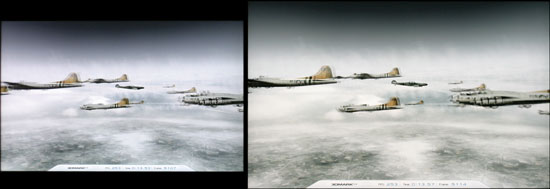 Dell 2408WFP |
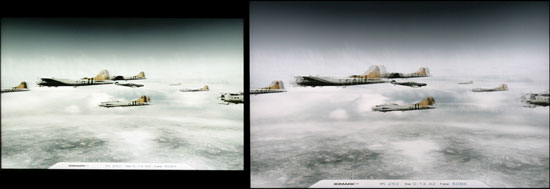 Gateway FHD2400 |
 Gateway FPD2485W |
 HP w2408 |
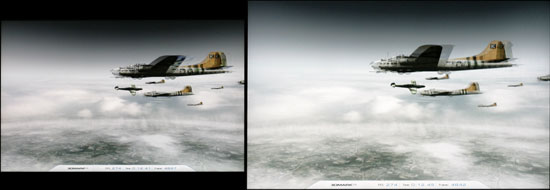 LaCie 324 |
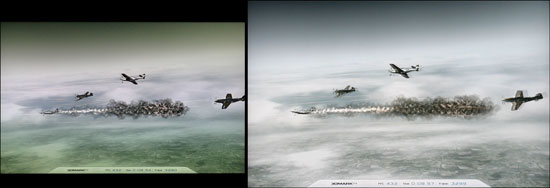 Samsung 245T |
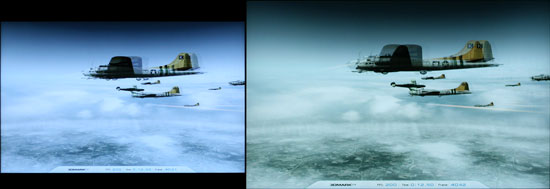 Samsung 2493HM |
The table tells a clear story: all of the S-PVA panels as we mentioned clearly have more input lag/internal processing lag than all of the TN panels. This is a pretty shocking result, as it indicates that the problem may actually be inherent in S-PVA technology, although there are still panels that do better in this area. The Gateway FPD2485W and Dell 2407WFP both have an input lag just under 20 ms -- or a one frame delay on average. The Samsung 245T has a 27 ms delay on average, indicating it would be one or two frames behind what is actually happening. Worst of all are the Dell 2408WFP in the LaCie 324, which have a two or three frame lag. (This is discounting any other lag that is present between the user and what they are seeing on the display; there's also a slight amount of lag associated with reading input from your mouse/keyboard, processing that input, rendering the resulting image, and sending that to your display.) In contrast, the four 24" TN panel LCDs all more or less match the HP LP3065.
Thus, we have no choice but to conclude that if you are seriously concerned about input lag, you will have to sacrifice viewing angles, color accuracy, and/or overall display quality in order to avoid this on the current 24" offerings. On the other hand, we have played games on all of the test LCDs, and we honestly can't say that we noticed any difference in our overall performance. But we weren't hopped up on Bawls and we don't have a 1337 name like Fatal1ty. Competitive gamers will probably feel differently.










89 Comments
View All Comments
AnnonymousCoward - Friday, May 16, 2008 - link
I agree with Jarred on both accounts: you can't go wrong with the LP3065 or 3007WFP-HC, and input lag is far less than the lag time you experienced on the tablet. But if you're really sensitive to it, I'd avoid the Dell 2708, Dell 3008, Samsung 244T, and Samsung 245T, as those seem to have the worst lag of all.For unbeatable 24" color accuracy, the choice is obvious: NEC LCD2490WUXi (U.S.) or Hazro HZ24W (U.K.). I think they have mid-range lag (35ms?), which you probably wouldn't notice. The LP3065, 3007, and DoubleSight 26" are high quality IPS screens with very little lag, and for professional animation work, why not go bigger than 24"?
AnnonymousCoward - Sunday, May 11, 2008 - link
Jarred, I'm glad to see input lag drawing so much attention. You seem well aware of this, but I wanted to point out that the LP3065 was a poor choice for a reference monitor. It likely performs the same as the 3007-HC, which has measurements that bounce from 0-20ms; 3 increments on your scale (maybe 2 considering refresh rate). Some LCDs out there consistently measure close to 0ms.The editor's comments are completely out of context! ("They're huge, heavy, and require more power, and the best ones were made over five years ago. Sorry - LCDs are where everything is heading.") A heavy, power hungry, old, and obsolete 15" CRT would still be an ideal reference.
JarredWalton - Tuesday, May 13, 2008 - link
It would probably be a faster reference, but I'm not going to try to dig one up. Sorry. My place is crowded enough without keeping around an obsolete CRT. I sold off a couple 19" CRTs two years ago, and that was the last time I had one around for testing. I had to junk my old 21" CRT (from 1997) because I couldn't even give it away. 85 pounds now at the junk pile.As it stands, I will continue to use the LP3065 as a reference LCD. If I test an LCD that scores better than the LP3065, that's not a problem: it will have a negative "relative input lag" score. A CRT might very well score 20ms faster; my problem isn't with 0ms vs. 20ms (assuming CRTs can score 0ms); it's with 0ms vs. 60ms and perhaps 0ms vs. 40ms.
Personally, I'm certainly fine with the LP3065 - it is in use on my own gaming system and I've never been bothered with any discernible input lag. Image tearing caused by turning off VSYNC is a much bigger concern -- and that's one area where I'd like to see LCDs improve; a 120Hz refresh rate would help a lot. But then we'd need all new graphics cards and connectors to manage the data rates for 120Hz at 2560x1600.
AnnonymousCoward - Friday, May 16, 2008 - link
I hear ya on CRTs being too big to keep around :)I thought your measurements would have more variation, like by 40ms, since in many lag tests I've seen, measurements varied by 20ms. But your variations were 20ms, including both the reference and the one tested. I'd have to agree that a CRT isn't necessary, since the variations are under control (but I'll still add 11ms to the final numbers, as you've talked about). I'm surprised your 245T results weren't higher.
I have a 3007-HC and agree about the excessive tearing. And of course if the framerate can't stay above 60, I have to disable vsync and live with it. You gotta admit, it's quite nice that the 8800-series cards came out within a year of the 30"ers, and that those two separate technologies complement each other.
I wonder why the DoubleSight is going EOL, if it's such a great monitor and hot seller! Does that indicate customer return problems?
ShocWave - Wednesday, May 7, 2008 - link
Actually, I have a 2493HM.AV mode will display 720p and 1080p at the correct aspect ratio with overscan. What it basically does is fill the screen and crops out the sides.
It's not 1:1, but better then nothing.
JarredWalton - Wednesday, May 7, 2008 - link
I just don't understand why anyone would *want* overscan. AV Mode takes 720p stretched to fill the whole screen and then overscans it, right? Or are you saying it only crops the left and right sides? (I suppose I could check if I dig the LCD back out.)I'm not a stickler on aspect ratios, especially 16:9 stretched to fit 16:10 - the information is merely listed for those who really do care. I still think the Gateway has a better approach and overall better design. The Samsung however offers better color accuracy and a non-glossy panel for the same price. It's a close second in the TN panel contest (out of tested LCDs).
10e - Saturday, May 10, 2008 - link
Yes, that's exactly what it does. Takes the 720p/1080p image and "zooms" it so that it fills the screen vertically, but gets cut off at the sides. So you have a 16:10 "window" looking at a 16:9 screen that is missing some of the image left and right (about 5%)I use an image from the "TigerDave" site that shows exactly the amount of 720p and 1080p overscan a display will suffer. It does actually cut off a very small part of the image top and bottom as well.
I don't know what Samsung had in mind here. The newer revisions of the 245T and 275TPlus have a built in image setting for 16:9 now that supposedly works, so why they couldn't fix this in a technically newer design (2493HM) is confusing.
BattleRattle - Wednesday, May 7, 2008 - link
Do input lag against a CRT... Its the analog of the CRT that mattersviperboy2025 - Tuesday, May 6, 2008 - link
How does this compare to other reputable LCD monitors, I can't help but think anandtech is commercializing Dell displays. I mean how about the profesional serious from viewsonic, VP2650wb. They don't have a 24" oddly, but they do have a 26", VP2650wb, at a similar price as the dell 24", costing $615 at onsale.com with free shipping at the moment.The specs of this monitor seem to be better at everything than the dell, as it has 26" (compare to 24"), same resolution, 3ms response time, same 110% color gamut, 4000:1 contrast ration (compare to 3000:1), only difference I see are the inputs, since the professional serious doesn't carry TV inputs. But viewsonic does has a line of the X serious, all of which have hdmi, component, composite, and s video components, which i even doubt most people would use anyways since they would be attaching this to a computer not using it as a TV.
JarredWalton - Tuesday, May 6, 2008 - link
Drop contrast ratio and response time from that list, as they are meaningless figures. Color accuracy with "dynamic contrast" is horrible on all the displays I've tested - you can see the screen get darker/brighter as you watch, and I find it extremely distracting. So what you end up with is a 26" display at a good price. Is it better or worse than the Dell? In color accuracy, I'd bet a lot of money that it's worse without calibration.For the record, Dell displays are already "commercialized". The only thing wrong with the 2408WFP that I can see is input lag. I made this quite clear. If you're looking for a good 24" LCD for professional work, I'd recommend it without reservation. If you want a gaming LCD, probably look around more.
I can't review every LCD out there, in part because most companies don't send us samples. Viewsonic is one of those companies (I've emailed them at least six times in the past year without a single response). They can call something a "professional display" if they want, but that doesn't make it any more true than the "get rich quick" schemes you see floating around. It may or may not be a great LCD; I'd love to get one sent here for review. Note also that all it took was one email to LaCie and they jumped at the opportunity for this review. If you're looking for a true professional display and you want great support, I'd recommend them in a heartbeat. $300 more is a tough pill to swallow for casual use, but for professionals that should be a non-issue.